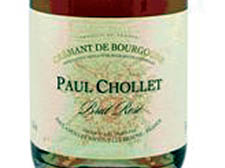|
|
 |
| |

Sparkling alternatives include Crémant de Bourgogne Brut Rosé, Maison Paul Chollet |
Producers going flat out to keep the fizzy stuff coming!
As more countries gain greater wealth, demand for Champagne is outstripping supply. The answer lies in a less fashionable alternative
CHAMPAGNE is running out,” declared a headline in Saturday’s Guardian. The world demand for upmarket fizz has become unsustainable. Russian Moguls, Japanese diners, Chinese capitalists and India’s nouveau riche have fallen in love with Britain’s most revered alcoholic drink.
Consequently, our supply of bubbly is in jeopardy. Cut-price supermarket deals may be about to dry up.
There have been shortages before. Early in the 20th century the French wine industry was in disarray. Fraud was rife and counterfeit Champagne was undermining a vital French export. Under pressure, the French government acted.
Boundaries limiting the champagne grape-growing area were established in 1908 and in 1935 rules and regulations governing production were introduced. It was soil, climate and tradition that made Champagne special, the government declared, and the law would be used to protect them. In theory these restrictions and rules remain to this day.
Since 2004 all the available land chosen in 1908 as suitable for growing Champagne grapes has been fully planted. Due to the emergence of new markets in China and India and the re-emergence of an old market, Russia, demand continues to grow. It is these factors that have created a potential crisis for Britain’s Champagne drinkers.
Until the Second World War Champagne drinking was largely confined to a rich elite in the economically advanced countries of the West. Their needs were met by a band of emblematic Champagne houses, which had little problem meeting demand.
The advent of post-war prosperity changed the situation. Two new but separate markets developed. The French, who had always favoured cheap wine and had ignored Champagne, went upmarket and were captivated by the popping cork – as were the British working class. The Champagne houses and the co-operatives, in partnership with British supermarkets, devised special cheaper blends for the UK market.
The French, shunning the special blends, turned to the region’s 20,000 small-scale, often part-time grape growers who own 90 per cent of the grape-growing land. An increasing number of these began making Champagne for direct sale to the public. This has reduced the amount of grapes available to the big producers who cannot legally look elsewhere to meet the ever-growing demand.
The taste of Champagne ranges from fruity to flowery, thin to corpulent, and spans sweet, medium sweet, dry and very dry. The price of a bottle can vary from under £10 to over £1,000. Regardless of the taste or the cost, once the cork pops and the wine fizzes, the imbiber believes he is in the presence of something special.
This is an illusion. Expensive and even cheaper signature Champagnes from the great houses may be special, but many of the cut-price bottles on sale in supermarkets are not. Champagne producers have consistently increased the grape yields obtained from the land – up threefold since 1940. As a result the base wine has become thinner requiring the addition of more and more sugar. This process creates more than 25 per cent of the alcohol in cheap champagnes.
High yields and added sugar are traditionally signs of a poor wine. Champagne makers get away with supplying an inferior overpriced product because the label seduces us. We are buying a dream not a drink.
Despite sensational Guardian headlines, the supply of Champagne is unlikely to run out. The producers will use the present “crisis” as a marketing opportunity. Most likely the old rules on land boundaries will be relaxed and production regulations eased yet again. Discounted poor quality Champagne but at a higher price will get through to the supermarket shelves.
Champagne is a sparkling wine and the world is awash with the stuff. Ninety per cent of sparkling wines are produced outside the Champagne region. The best of this is often cheaper than Champagne, is made from lower- yielding vines and without adding sugar to obtain alcohol.
If prices do increase significantly, wise shoppers should leave it to rich Russians and look elsewhere for their fizz. |
 |
|
| |

|
|
 |
|









